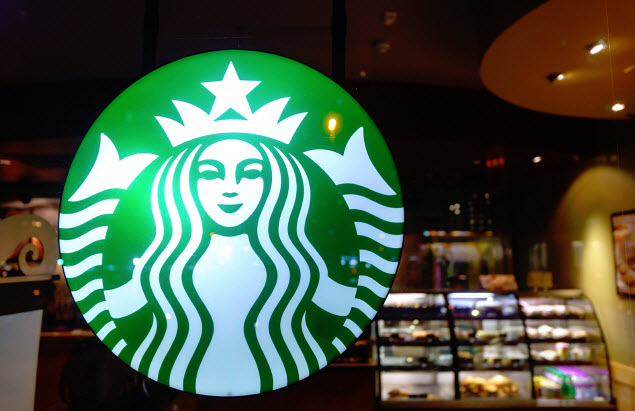The most successful smartphone transaction service is continuing to rise in popularity.
As much as Apple Pay may be holding the spotlight, at the moment, when it comes to mobile payments services, on the side of actual successes that have been proving themselves over time, Starbucks has remained at the very top of the list.
An earnings call from Howard Schultz, Starbucks CEO, revealed considerable data and insight.
Schultz explained that in the financial quarter that came to an end on December 28, 2014, Starbucks had more than 13 million mobile payments app users throughout the United States. This shows a rise of 1 million people from the previous quarter, when there had been just over 12 million users of that mobile application. Overall, this brought about a considerable user base for the smartphone based transactions in its store locations.
Schultz reported that 16 percent of the total transactions processed by the company were through mobile payments.
 Comparatively, Apple Pay had been reporting early victories in the use of that mobile wallet at Whole Foods, where 1 percent of the sales had been processed using smartphones. Clearly, Starbucks has been able to not only create a success out of its service, but it has managed to do so in a solid way that is generating a rapid, steady increase in the number of people who are actually using it. They have managed to avoid becoming a flash in the pan gimmick and have provided their customers with a transaction method that they are happy to use on a regular basis.
Comparatively, Apple Pay had been reporting early victories in the use of that mobile wallet at Whole Foods, where 1 percent of the sales had been processed using smartphones. Clearly, Starbucks has been able to not only create a success out of its service, but it has managed to do so in a solid way that is generating a rapid, steady increase in the number of people who are actually using it. They have managed to avoid becoming a flash in the pan gimmick and have provided their customers with a transaction method that they are happy to use on a regular basis.
In his own words, Schultz stated that “We continue to see broad customer acceptance and adoption of our mobile payment technologies,” adding that “Today in the U.S. alone, over 13 million customers were actively using our mobile apps. And we are now averaging more than 7 million mobile transactions in our stores each week—representing 16% of total tender. That’s more than any other bricks-and-mortar retailer in the marketplace.”
Starbucks isn’t planning to simply stay put with the current offerings of its mobile payments app. It now intends to roll out a smartphone based ordering service, which is already underway as a part of a trial in Portland, Oregon.
At the moment, this industry makes up about 4 percent of the gross domestic product of that country.
According to a report that has been recently published, mobile technology makes up approximately 4 percent of the gross domestic product of China, as the country now has enough innovators within that industry to include itself among the highest in the world.
Around the globe, only the United States and South Korea have more mobile tech inventors than China.
This, according to a report that was issued by the Boston Consulting Group. It also stated that beyond mobile technology, China is watching a considerable increase in its community of app developers. It has been estimated that there are about 1 million people who are currently employed within the rapidly growing mobile application field. This is over twice the number of people who are working in that field in the United States.
It is clear that China has stepped onto the wave of mobile technology and plans to continue to ride it.
 According to the report, “China has become a highly competitive place to import and assemble components into finished products, allowing the country to tap into its strong manufacturing base.” At the moment, the report says that the mobile tech sector in the country represents 3.7 percent of the country’s GDP. Moreover, its compound annual growth rate from 2009 through last year was recorded to be 17.7 percent.
According to the report, “China has become a highly competitive place to import and assemble components into finished products, allowing the country to tap into its strong manufacturing base.” At the moment, the report says that the mobile tech sector in the country represents 3.7 percent of the country’s GDP. Moreover, its compound annual growth rate from 2009 through last year was recorded to be 17.7 percent.
The report stated that on a global scale, the mobile tech revolution is headed toward the next trillion dollar market. As the largest smartphone market, China has been rapidly improving its market share in areas that have higher value. The report also included the results of a survey that included the participation of 7,500 individual customers, as well as 3,500 small and mid-sized companies. The participants – both business and individuals – were from six different countries, including the United States, China, and India.
The mobile technology report expressed that “With the success of companies in the device space, as well as telecom equipment manufacturers, Lenovo Group Ltd.’s recent acquisition of Motorola has further strengthened China’s capabilities in mobile innovation.”
 Comparatively, Apple Pay had been reporting early victories in the use of that mobile wallet at Whole Foods, where 1 percent of the sales had been processed using smartphones. Clearly, Starbucks has been able to not only create a success out of its service, but it has managed to do so in a solid way that is generating a rapid, steady increase in the number of people who are actually using it. They have managed to avoid becoming a flash in the pan gimmick and have provided their customers with a transaction method that they are happy to use on a regular basis.
Comparatively, Apple Pay had been reporting early victories in the use of that mobile wallet at Whole Foods, where 1 percent of the sales had been processed using smartphones. Clearly, Starbucks has been able to not only create a success out of its service, but it has managed to do so in a solid way that is generating a rapid, steady increase in the number of people who are actually using it. They have managed to avoid becoming a flash in the pan gimmick and have provided their customers with a transaction method that they are happy to use on a regular basis.
 According to the report, “China has become a highly competitive place to import and assemble components into finished products, allowing the country to tap into its strong manufacturing base.” At the moment, the report says that the mobile tech sector in the country represents 3.7 percent of the country’s GDP. Moreover, its compound annual growth rate from 2009 through last year was recorded to be 17.7 percent.
According to the report, “China has become a highly competitive place to import and assemble components into finished products, allowing the country to tap into its strong manufacturing base.” At the moment, the report says that the mobile tech sector in the country represents 3.7 percent of the country’s GDP. Moreover, its compound annual growth rate from 2009 through last year was recorded to be 17.7 percent.